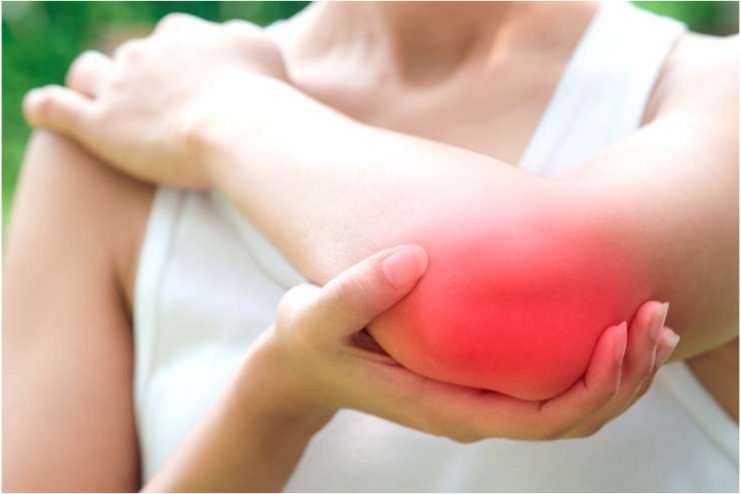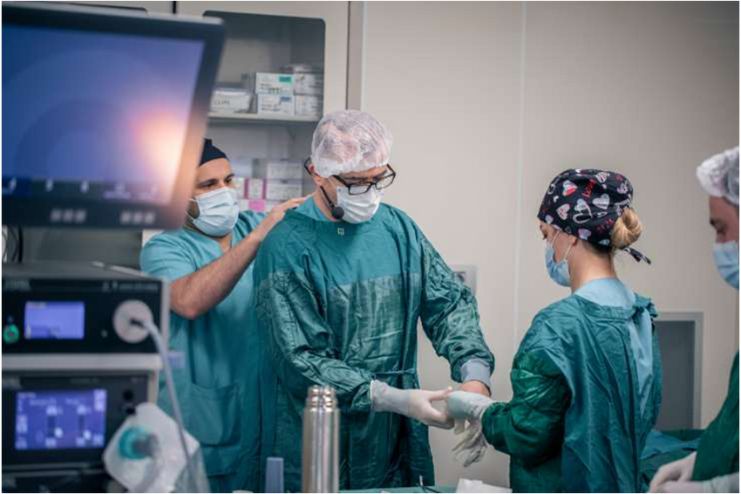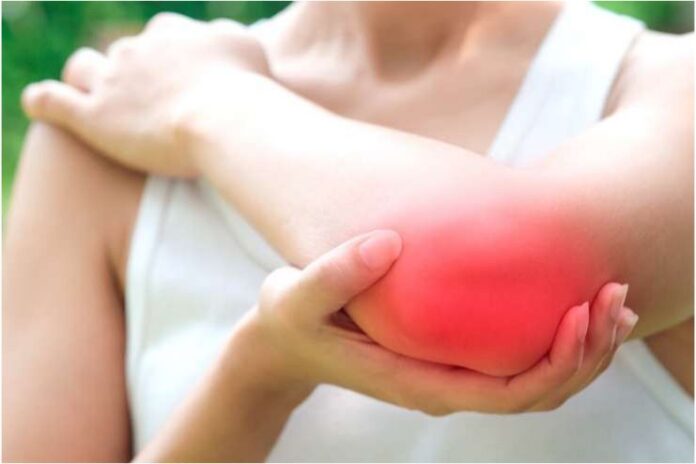Affiliate Disclaimer
Some links in this article are affiliate links. We may earn a small commission if you make a purchase through these links, at no extra cost to you. We only recommend products we find useful to our readersThe painful ailment known as tennis elbow, or lateral epicondylitis, is brought on by overuse of the forearm muscles and repeated action, which inflames the tendons in your elbow. Contrary to its name, this ailment affects anyone who performs repetitive gripping, twisting, or lifting tasks, like typing, painting, or lifting weights.
It is not limited to tennis players. Simple acts like holding a cup or shaking hands become challenging due to pain, stiffness, and weakening in the grip caused by microscopic rips in the tendons caused by the tension from these repetitive movements.
Early action is essential to prevent the illness from getting worse. This article will discuss the reasons, signs, and best ways to prevent tennis elbow, along with practical remedies.
Read More: 10 Best Elbow Braces For Tendonitis – Manage The Effects
Causes For Tennis Elbow
As the player strikes the ball with a backhand, the racket’s force frequently causes tennis elbow. Overstress can cause soreness in your forearm muscles, which connect to the outside of your elbow. The tendons that roll over the end of your elbow can sustain damage when you play tennis with a backhand stroke. Tennis elbow can result from:
- Using a tennis racket that is either too short or too tightly strung.
- Weak wrist and shoulder muscles.
- Striking heavy, damp balls or striking the ball off-center on the racket.
Tennis elbow is standard in those who don’t play the sport. Any repeated movement can be the source of the issue. Tennis elbow can also be caused by:
- Utilizing a hammer or screwdriver.
- Chopping meat.
- Plumbing.
- Gardeners and weightlifters.
Note: A golfer’s elbow differs from a tennis elbow because, although repetitive hand movements cause tendon tears, the pain in a Golfer’s elbow concentrates on the inside of the elbow.
Risk Factors for Tennis Elbow

Age: Tennis elbow is standard in adults between 30 and 50.
However, it can occur in people of any age group.
Occupation: As mentioned earlier, people working in professions involving more arm and wrist are likely to develop tennis elbow.
Certain sports. Sports people involved in racket usage increase the risk of tennis elbow.
Read More: 10 Best Finger Resistance Bands and Its Benefits
Symptoms Of Tennis Elbow
Pain radiating from the outside of the upper forearm is the most typical sign of a tennis elbow. Pain may occasionally radiate down the arm to the hand and wrist. Other signs and symptoms include:
- The discomfort may develop gradually or all at once.
- Burning feeling on the outside of the elbow or running up and down the arm.
- A weak grip, particularly while attempting to shake someone’s hand or hold anything like a pen or racquet.
Diagnosis Of Tennis Elbow

With a physical examination, your healthcare professional may frequently diagnose tennis elbow. You might occasionally undergo specific tests, like:
- X-ray: It is to examine your elbow’s bones. Doctors perform it to determine whether you have elbow arthritis or other issues.
- An MRI: It can reveal the extent of the injury to your tendons. An MRI of your neck can determine whether your arm pain is due to disk issues in your spine or arthritis in your neck.
- Electromyography, or EMG: It could indicate whether any nerve issues are causing your elbow pain.
Treatment For Tennis Elbow
Your doctor will recommend therapies to promote tendon healing. The most effective treatment for the tennis elbow is typically the RICE method:
Rest: Stop doing the activity that led to your tennis elbow. As your elbow recovers, try not to use it.
Ice: Apply a cold compress or ice pack on your elbow several times daily for 15 to 20 minutes. To prevent ice packs from directly contacting your skin, wrap them in a towel or other thin cloth.
Compression: Cover your elbow with a compression bandage. Your provider can instruct you on how to apply the bandage securely.
Elevation: Keep the arm elevated when possible to help minimize swelling and promote healing.
Treatments for tennis elbow without surgery include:
OTC (over-the-counter) analgesics: Acetaminophen or over-the-counter NSAIDs help to ease discomfort and reduce edema. Before taking these drugs for more than ten days in a row, consult your doctor.
Wearing a Brace: Braces for the elbow and wrist will give your tendon time to rest and repair. Your doctor will determine the type of brace you require and the frequency of its use.
Shockwave Therapy: Wherever your tendon is injured, your healthcare provider will apply a particular pressure frequency. The shockwaves urge your body to accelerate the healing process.
Platelet-rich plasma is created by processing a blood sample to concentrate platelets, which are proteins that promote healing. The blood sample is then injected into the elbow.
Read More: Incorporating Functional Training for Everyday Strength and Mobility
Surgery for Tennis Elbow

Most of the time, nonsurgical treatment significantly improves tennis elbow. If symptoms do not significantly improve in six to twelve months, surgery may be the next best course of action to remove damaged tissues and repair torn tendons.
The following procedures are used in surgery to correct tennis elbow damage:
Advanced Arthroscopic Methods for Tennis Elbow Treatment:
Arthroscopic treatments are minimally invasive operations carried out by making a tiny incision in the area of your elbow. To view the elbow’s components, your orthopedic surgeon inserts an arthroscope, a thin, flexible device with a tiny camera and light. The surgeon then performs tendon repair or debridement using specialist tools. Less pain and a speedier recovery are made possible by this.
Reconstruction of Tendon:
Tendon restoration may be necessary to repair a tennis elbow injury. Penn orthopedic surgeons use the most recent procedures to reconstruct tendons to improve function, restore elbow strength, and lessen pain.
Strategies for Preventing Tennis Elbow
Do Not Perform the Same Tasks: If you play a sport that requires hitting with your arm or performing other high-impact actions, you should add a cross-training program to counteract these activities. If you haven’t played in a long time, make sure to ease back into play by starting out slowly. Restoring your strength and returning to your previous level of form and technique could take many weeks.
Take Rests: If your arm starts to hurt, consider it a sign that your body needs a rest. Make sure to take lots of breaks in between games because playing sports that involve a lot of arm motions can lead to pain, such as tennis elbow.
Regular Exercise and Correct Form When Lifting Heavy Weight: You run the danger of injury if you don’t start slowly with new sports like tennis and follow a physical fitness program. This is especially true if you don’t engage your forearm muscles daily. Work out your muscles to be flexible and strong enough to withstand tension. It involves moving your muscles up and down to stretch them. Your muscles will become more assertive with push-ups, arm rotation, bending, and stretching.
Warm up and Stretch: Make sure your muscles are getting enough blood before beginning any physical activity. It will enable your muscles to withstand more strain when playing tennis, increase their flexibility, and enhance their range of motion, lessening your chance of getting hurt.
Appropriate Technique: To ensure you employ the proper form and technique, consider working with a professional tennis teacher. This can prevent the onset of tennis elbow by avoiding overusing your muscles. The more carelessly you perform, the higher your risk of injury.
Read More: Resistance Bands for Arm Strength: A Beginner’s Guide
Conclusion
Although tennis elbow can be frustrating and painful, it is treatable with the correct preventative and therapeutic measures. It can be prevented by strengthening forearm muscles, avoiding repetitive strain, and employing appropriate techniques. Early handling through rest, ice therapy, bracing, and focused workouts can speed up recovery if symptoms emerge.
Never disregard chronic discomfort; instead, seek advice from a physiotherapist for a customized strategy to regain strength and range of motion. By being proactive, you can avoid long-term harm and carry on with your everyday activities without experiencing any pain.
-
Dec 2017Written by Sumana Maheswari
-
Feb 2025Edited by Ankita
References
- https://www.hopkinsmedicine.org/health/conditions-and-diseases/lateral-epicondylitis-tennis-elbow
- https://www.healthdirect.gov.au/tennis-elbow
- https://www.webmd.com/fitness-exercise/tennis-elbow-lateral-epicondylitis
- https://www.mayoclinic.org/diseases-conditions/tennis-elbow/diagnosis-treatment/drc-20351991
- https://my.clevelandclinic.org/health/diseases/7049-tennis-elbow-lateral-epicondylitis
- https://www.childrenshospital.org/conditions/tennis-elbow
- https://www.pennmedicine.org/for-patients-and-visitors/find-a-program-or-service/orthopaedics/elbow-pain/tennis-elbow
- https://orangecountyorthopedicgroup.com/risk-factors-of-tennis-elbow/
- https://www.sports-health.com/sports-injuries/elbow-injuries/tennis-elbow-causes-and-risk-factors
- https://gobeyondlimits.com/tennis-elbow-causes-risk-factors-symptoms-and-treatment/
In this Article

















